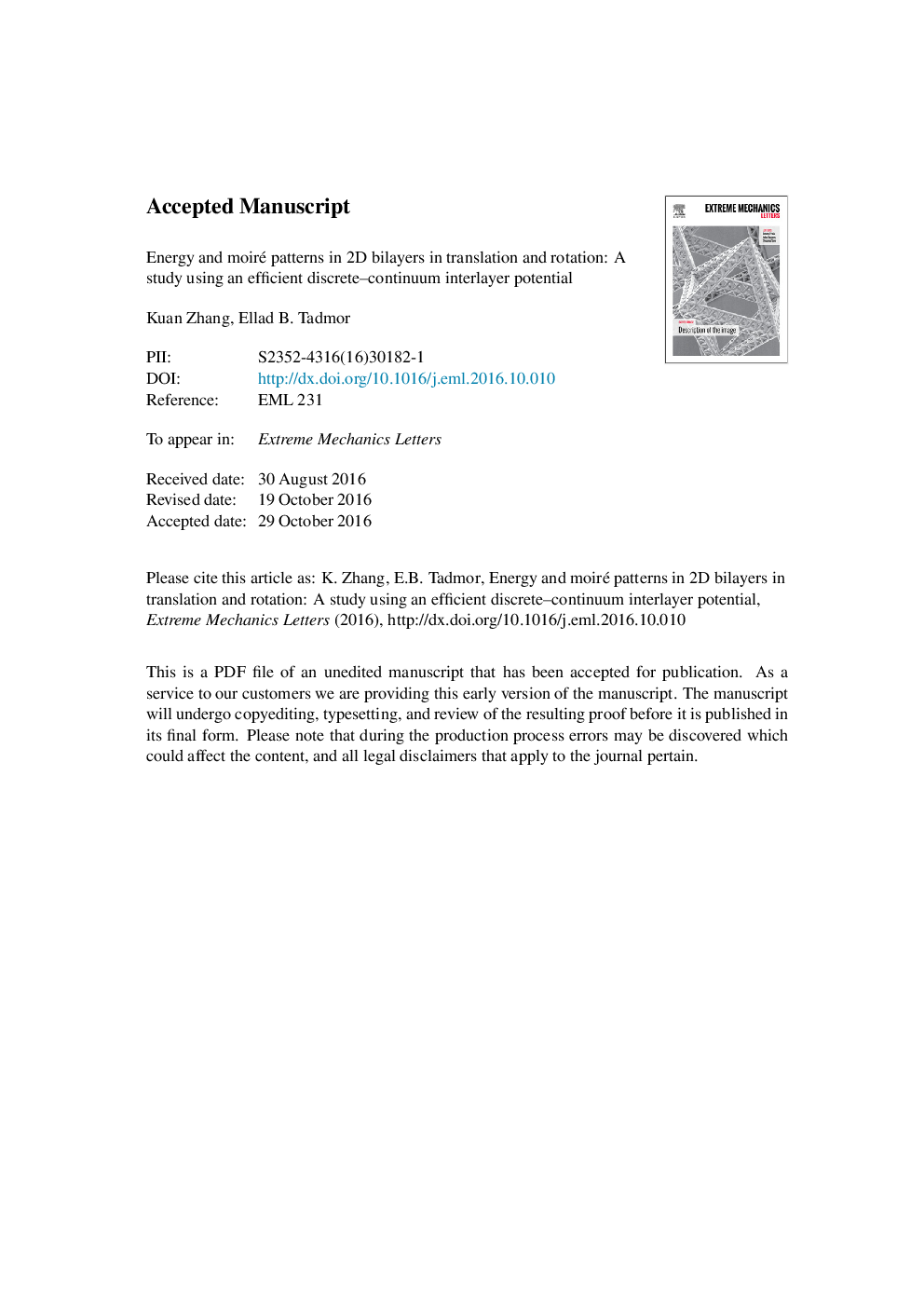| Article ID | Journal | Published Year | Pages | File Type |
|---|---|---|---|---|
| 5014431 | Extreme Mechanics Letters | 2017 | 10 Pages |
Abstract
Layered 2D materials consist of a stack of 2D materials interacting weakly via van der Walls (vdW) forces. The vdW interactions are modeled using long-range interlayer potentials, such as Lennard-Jones (LJ) and Kolmogorov-Crespi (KC), that are expensive to compute in atomistic and multiscale simulations. We propose a discrete-continuum (DC) effective potential for LJ and KC that includes full atomistic resolution in the short range and a continuum integral approximation outside. This reduces the computational cost by two orders of magnitude while retaining excellent accuracy. With this method, we examine the relation between stacking states and interlayer energy of a graphene bilayer under relative in-plane translations and rotations. We compare the performance of LJ and KC and characterize the moiré patterns under rotation. We find that the energy of an infinite graphene bilayer is constant with rotation (with discontinuities at special angles) and explain this in terms of the moiré pattern supercell. We also find that the saddle point (SP) stacking configuration becomes the stable ground state (as opposed to AB stacking) when the bilayer is compressed.
Keywords
Related Topics
Physical Sciences and Engineering
Energy
Energy Engineering and Power Technology
Authors
Kuan Zhang, Ellad B. Tadmor,
